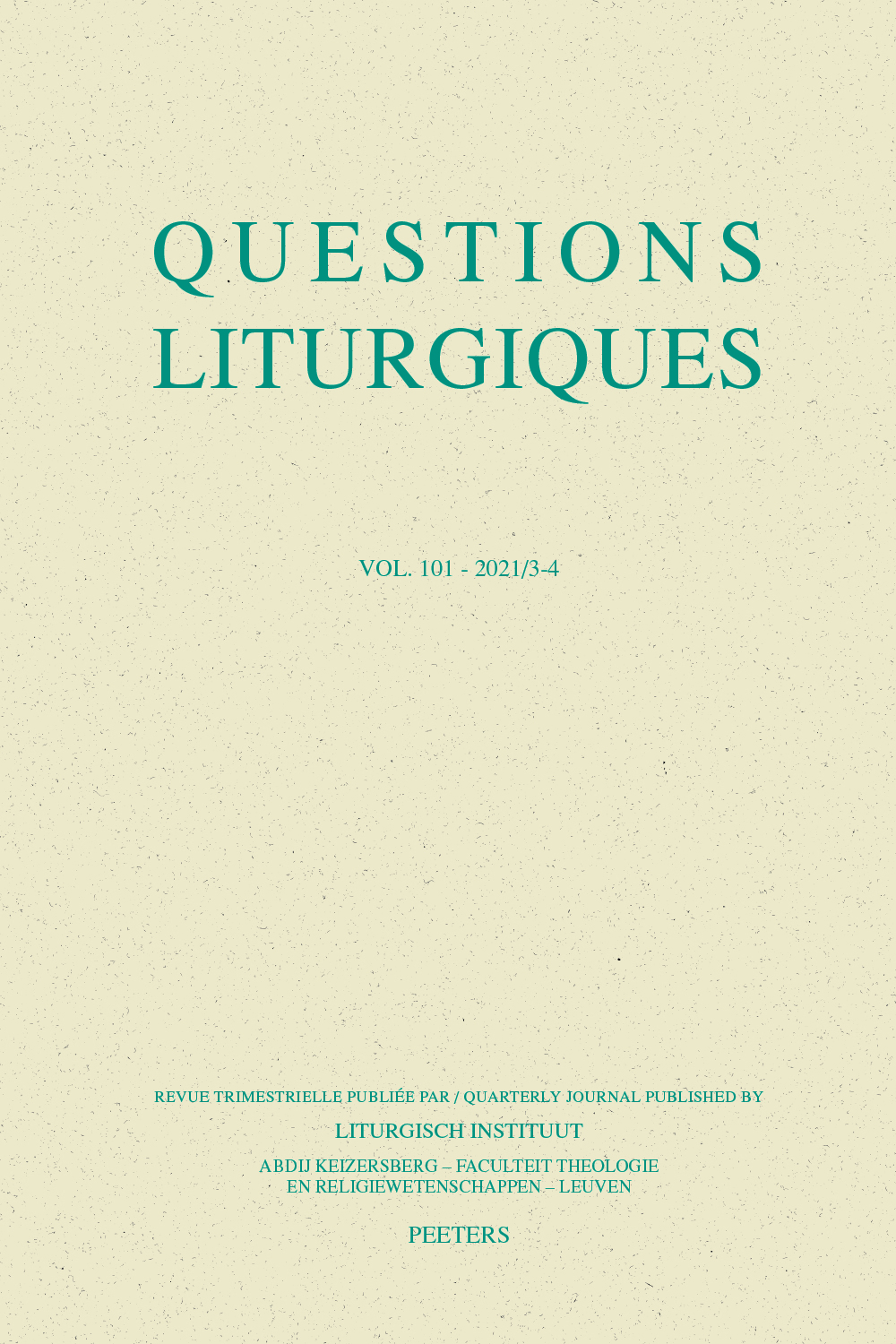 previous article in this issue previous article in this issue | next article in this issue  |

Preview first page |
Document Details : Title: Did the Council of Trent Produce a Liturgical Reform? Subtitle: The Case of the Roman Missal Author(s): GELDHOF, Joris Journal: Questions Liturgiques/Studies in Liturgy Volume: 93 Issue: 3-4 Date: 2012 Pages: 171-195 DOI: 10.2143/QL.93.3.2961372 Abstract : The standard evaluation of the Council of Trent, which is basically due to Hubert Jedin’s detailed historical investigations, is that it was above all a reform council. It not only responded to the protestant Reformation but also took proper initiatives to reform the life of the (Roman Catholic) Church. With respect to the liturgy, however, it is legitimate to raise the question whether the Council of Trent produced a genuine liturgical reform. This article proposes to answer this question in a very nuanced way. On the one hand, there is no doubt that Trent had an immense impact on the self-organization of the Church and thus also on the worshiping life of the faithful. On the other hand, it didn’t actually deal so much with the liturgy qua liturgy. The council was primarily interested in ‘right thinking’ about the sacraments but may be said to have looked down upon liturgy as a source or motor for reform. Rather, liturgical changes were the consequence of decisions made on the basis of theological, canonical, or ecclesial considerations. Because the liturgy in general is too broad a phenomenon to be covered in one article, the present text is limited to the Roman Missal. It is argued that a close study of this particular liturgical book corroborates most of the general assumptions about Trent’s supposed liturgical reform. Trent itself had left it up to the pope to publish an authorized version of the missal; it didn’t differ that much from previous versions; and it was the offspring of a certain devotional and spiritual mentality. What makes the 1570 Roman Missal stand out among similar documents is neither its content nor its form, but the fact that this was henceforth the only permitted version to celebrate the Eucharist. After all, the said Roman Missal may have been more the fruit of a modern approach aiming at efficiency than a sign of deep concern for liturgical renewal. L’évaluation habituelle du Concile de Trente, établie sur les investigations historiques détaillées d’Hubert Jedin, le présente avant tout comme un concile réformateur. Il ne voulait pas seulement s’affirmer comme une réponse à la Réforme protestante mais proposer en outre les initiatives propres de réforme quant à la vie de l’Église romaine catholique. Dans le domaine de la liturgie, cependant, il est légitime de poser la question de savoir si le concile de Trente a produit une réforme liturgique ‘propre’. Cet article se propose de répondre à cette question d’une manière vraiment nuancée. D’une part, il est indiscutable que Trente a constitué un immense impact sur l’organisation propre de l’Église et ainsi sur la vie pastorale , la vie de foi. D’autre part, il ne s’est guère préoccupé de la liturgie en tant que liturgie. Le concile était avant tout soucieux d’une ‘compréhension droite’ quant aux sacrements mais on peut dire qu’il a visé assez bas quant à la liturgie comme source ou moteur de la réforme. Les changements liturgiques furent la conséquence de décisions prises sur la base de considérations théologiques, canoniques ou ecclésiales. Comme la liturgie en général est un phénomène trop large pour être traité en cet article, on s’est limité au cas du Missel romain. Il est clair qu’une étude réservée à ce livre liturgique en particulier corrobore la plupart des options générales quant à la réforme liturgique supposée de Trente. Trente a laissé au pape le soin de publier une version autorisée du missel. Celle-ci n’a différé que peu des versions antérieures, manifestant une certaine mentalité dévotionnelle et spirituelle. Ce qui caractérise le Missel romain de 1579 parmi d’autres documents similaires n’est point son contenu ni sa forme, mais le fait qu’il devenait la seule version autorisée pour célébrer l’eucharistie. Après tout ce missel romain s’affiche davantage comme le fruit d’une approche moderne cherchant l’efficacité plutôt que le souci d’une recherche profonde de renouveau liturgique. |
|


